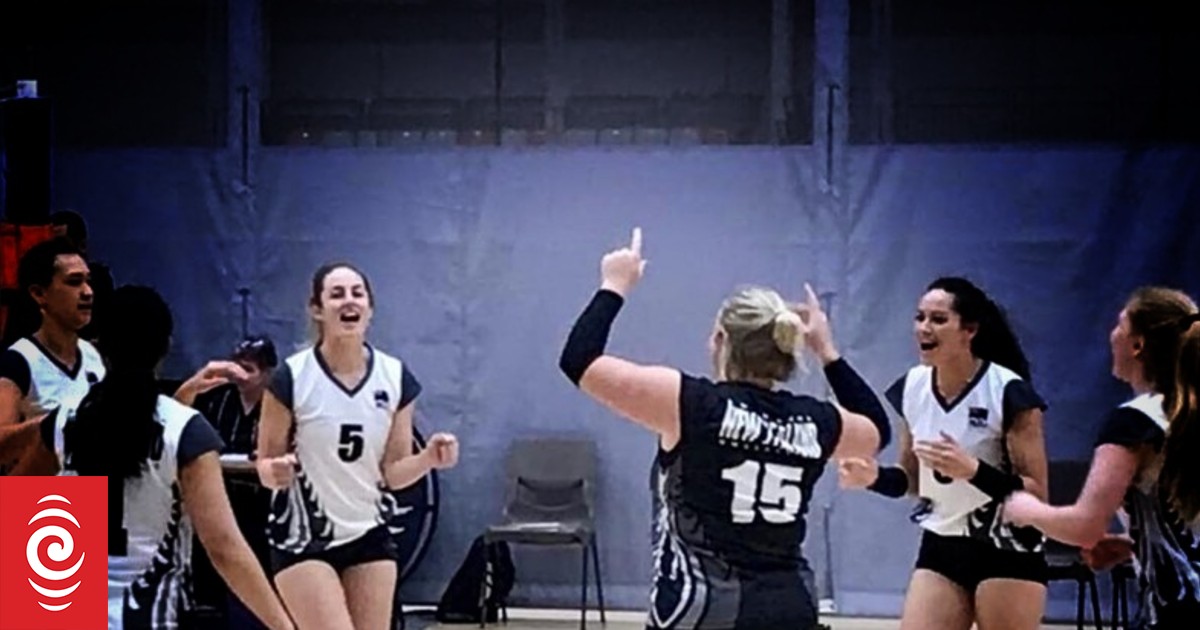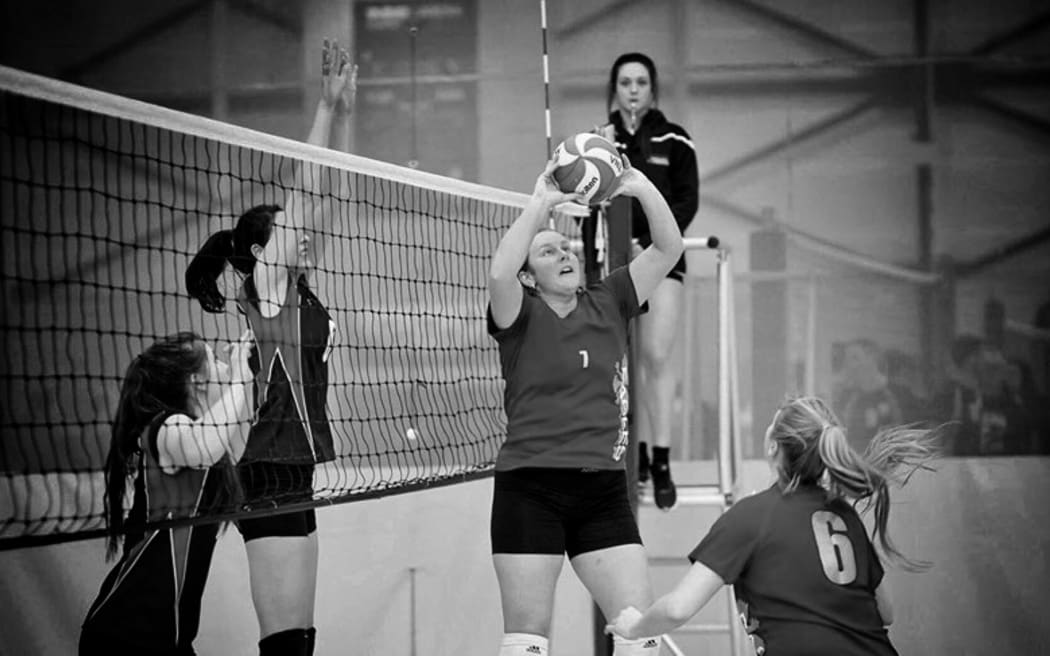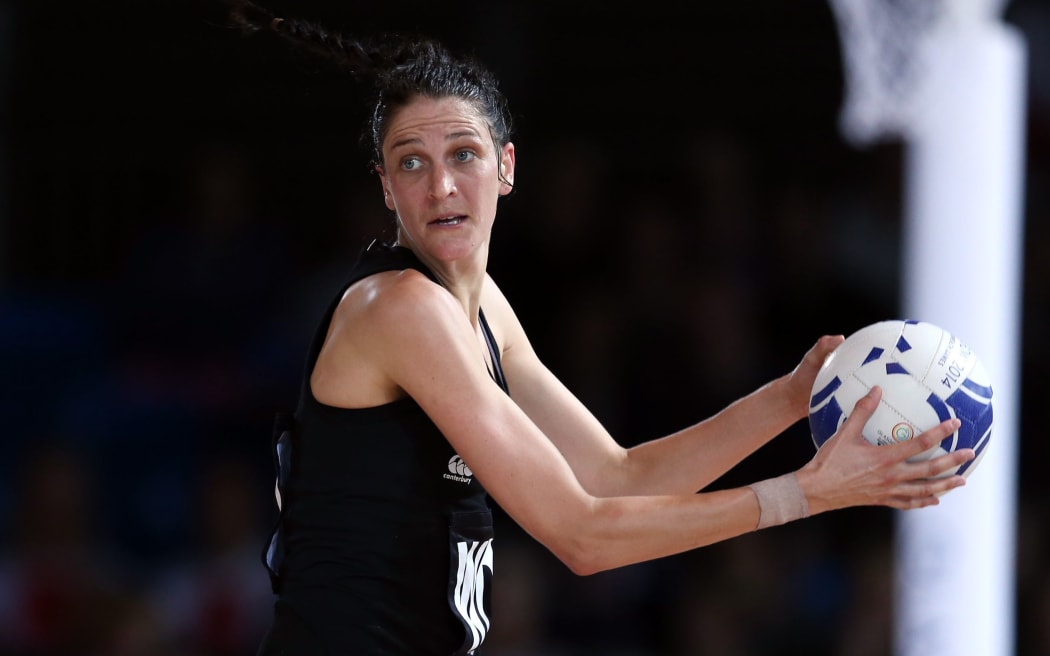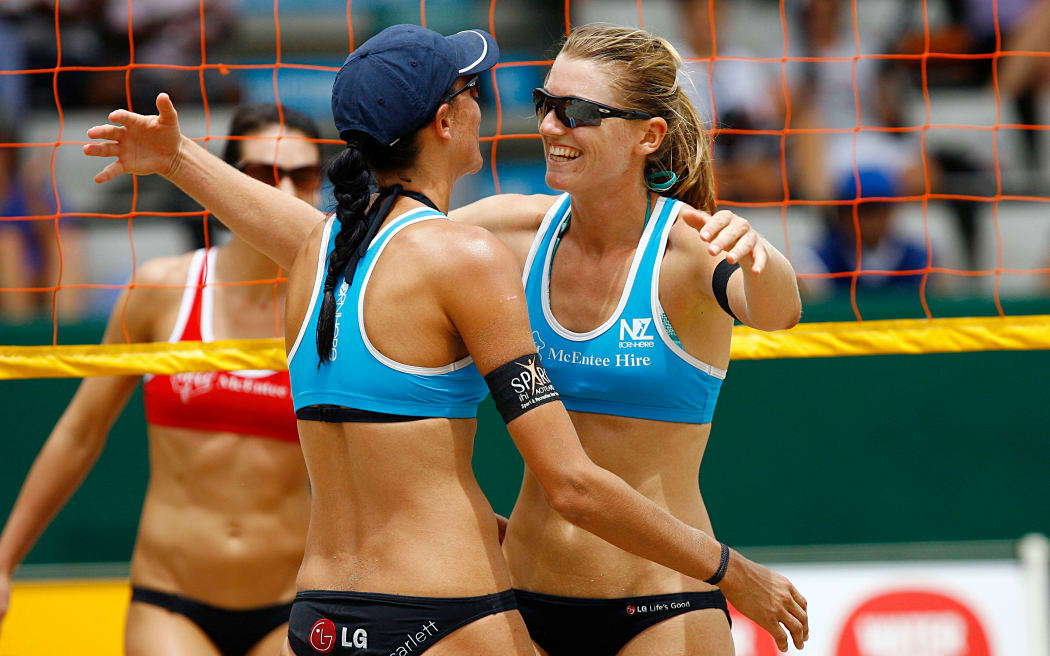
The minor sport experiencing major growth in NZ

Girls continue to flock to volleyball with 14,000 girls playing at secondary school, making it second only to netball participation rates.
Photo: Supplied
It’s the fastest growing sport in our secondary schools but it struggles to get visibility, keep up with demand, and risks losing top players to other codes.
Traditional six-aside volleyball is now the fourth most popular sport in New Zealand secondary schools with 24,000 young people playing last year.
Netball has the highest participation rates at secondary school with nearly 26,000, closely followed by basketball and rugby union.
Over the last five years volleyball has grown by 35 percent in numbers in secondary schools, bucking the trend of most traditional team sports.
Girls continue to flock to volleyball with 14,000 playing at secondary school, making it second only to netball as the sport of choice for girls.
Volleyball New Zealand CEO Toni-Maree Carnie said it was a huge outlier.
“It’s an outstanding number compared with the rest of the I guess traditional major sports so it just continues to boom. It’s continued with its huge numbers this year as well.” .
Carnie, who leaves the job soon after five years in charge, said the sport was appealing for a number of reasons.
“It’s quite a small space you’re playing in so your mates are right beside you. It’s dynamic and fast but non contact so it doesn’t have those health and safety issues that some sports do. And a wide range of ages can play,” Carnie said.

The Volley Ferns at the Asian Championships in South Korea in 2019.
Photo: Supplied
She said it was hard to quantify participation rates post school but the demand for their annual events continued to grow.
“Our inter-provincial champs keep growing. And the number of teams wanting to play at our national club champs continues to increase, that we needed to add an entire grade.
“We can’t count the people who play social volleyball at the local rec centre, and the ethnic and church groups that play. Those people aren’t captured in any numbers we collect.”
She said the migrant population had contributed to the growth of the sport in the social adult space.
Carnie said it was a challenge to keep up with the growing demand for the sport.
“There’s a critical shortage of indoor facilities right around the regions. We’re competing with other sports for space so we are also trying to provide offerings for grass volleyball, to at least give people the opportunity to play.”
Since it started getting established in New Zealand in the 1950s, the sport has always relied on passionate volunteers but they are struggling to keep up with demand.
“It’s the same coaches, administrators within regions and associations, there’s a risk of burnout. We continually try to grow the workforce for the sport.”
Like most sports there is a drop off of players after high school and Carnie admits volleyball is harder to find outside of school.
“Usually because it’s the same people who are coaching school and rep and so on, there’s a lack of people available. Trying to grow our club capability is something that’s really important but there are not as many opportunities to play volleyball as we would like to have.”
And without a domestic league providing regular competition, where does that leave our secondary school talent once they finish school?
The lure of scholarships and rival codes
Indoor volleyball was the first sport Anna Harrison represented New Zealand in and the former Silver Fern and international beach volleyballer is back in the national squad after nearly 20 years.
The 40-year-old fell back in love with the game when she played in last year’s National Volleyball League (NVL), where she noticed more young depth coming through.
The New Zealand indoor volleyball teams have their first international event in a number of years due to Covid at the end of June against Chile, in Chile.
“But volleyball has not really changed too much since back in the early 2000s, in that there’s still a lot of pay your own way and who’s available,” Harrison said.
“The coach selects the people that he would love to have in his squad, then basically they go ‘this is the tour we want to do, this is how much it’s going to cost, who can play?’.
“So volleyball is potentially missing out on a whole lot of talent because you have to pay your own way and it’s not cheap so I’m in the squad but there’s probably a few that are missing out because they can’t afford it.”

Anna Harrison retired from the Silver Ferns in 2017.
Photo: PHOTOSPORT
The mother of three made herself unavailable for the Chile tour because it was too difficult to work in around her family but she went to a recent training camp in Christchurch.
Twenty years ago it was very rare for volleyballers here to get a scholarship to universities in North America but there are as many as 30 in that bracket now, mostly girls.
Harrison said gaining a scholarship was very much the focus now for talented volleyballers because it gave them a pathway – but it was a short-term one.
“I considered a scholarship too when I was at school but my big picture was ‘what will I come back to in New Zealand?’.
“So all these girls are having this awesome exposure to volleyball in America but when they’ve got their degree they’re coming back to nothing, which is so sad.
“I do worry for those girls. My question would be what’s for them after that scholarship and what’s the plan to help them have a pathway after that in indoor volleyball.”
In the early 2000s Harrison started focussing more on netball as she moved up the ranks of the country’s number one women’s sport.
She’s seen many volleyballers pull the pin or choose other sports that are better funded and have a clear pathway to higher honours.

There’s a critical shortage of indoor facilities so Volleyball NZ are also trying to provide volleyball on grass.
Photo: Supplied
Steps towards playing for New Zealand are minimal and sporadic at best.
Harrison said what top players are craving are regular high intensity training sessions and matches and Volleyball New Zealand took a step towards that when it launched the National Volleyball League (NVL) in 2021.
It brought 48 of the country’s best volleyballers together, divided across four men’s and women’s teams, using a draft system to generate a competitive tournament.
But it’s not going ahead this year while Volleyball NZ does a competition review.
Carnie said the NVL ideally needed to be run in the June/July window, when scholarships athletes were back from North America.
“Last year because of Covid and other things we ended up running the NVL in November but it just didn’t suit. Our international scholarship athletes weren’t back, and it clashed with a whole lot of other things in the calendar.
“And this year we’re sending our Volley Ferns and Volley Blacks to Chile in June/July so you can’t run the NVL without your best 12 players. So part of the review will be looking at where the NVL sits.”
The struggle to get funding as a ‘minor’ sport
Nearly all the participation at high school is through indoor volleyball but in some ways the traditional version of the sport became the poorer cousin when beach volleyball started growing a couple of decades ago.
Part of that is because beach volleyball is a Commonwealth Games sport, and our top teams also have a chance of getting to the Olympics.
More recently High Performance Sport New Zealand provided some financial support to beach athletes, with beach volleyball sitting in the aspirational sports bracket.
Harrison said realistically beach volleyball was an easier sport to get results in.
“In the sense that there’s just two players, you can get your own sponsorship and you go out there and you get your results. Whereas indoor, you need 12 plus players and that’s a lot of money so it kind of has taken a back seat to beach.
“Indoor volleyball is a massive world sport and to break into the higher tiers, I hate saying it but it comes down to money right. You need to have the money to be able to bring the players together and set up a programme,” Harrison said.

Anna Harrison and Susan Blundell were the highest ranking NZ female pairing reaching 33rd in the beach volleyball world rankings.
Photo: Anthony Au-Yeung
But given the big increase in participation at the school level Carnie believed the sport had a good argument to get more funding at least at the grass roots level.
Carnie said she was having conversations with Sport New Zealand and it was a ‘work in progress’.
“Here is a sport that sits under the radar and yet has phenomenal numbers for young people which is mostly where we are trying to get people active and participating in sport.”
Carnie said getting media coverage was extremely difficult despite how many people now played the sport in New Zealand.
“We only get beach volleyball on TV and that’s a massive struggle in itself, even with the NZ women being the Asian champs. We’ve run the NVL for the last two years with a really high standard but no one wants to broadcast it.”
Sebastian Gonzalez was appointed coach of both the Volley Ferns and Volley Blacks last year and helped set up the tour to Chile, his homeland.
Gonzalez has lived in New Zealand for nine years and said there were so many talented athletes.
“But it’s frustrating because some just can’t afford it unfortunately, we’re not reaching out full potential and we have a lot of talent going overseas,” Gonzalez said.
“Even when scholarship athletes come back in the winter, for their summer break we often miss out on those players because they can’t necessarily afford to play for New Zealand.”
Gonzalez said one of the biggest challenges was not having a high level of competition on a regular basis.
The New Zealand sides will see what high performance sport looks like when they meet Chile, where it’s the country’s second biggest sport, top players get paid, and games are televised.
He said the games against Chile will give the New Zealand sides a true international benchmark for building towards future tours and tests as well as Asian Championship competition.
Senior international tours to Chile
Volley Ferns – 26 June – 7 July
Volley Blacks – 12 July – 22 July
Stay connected with us on social media platform for instant update click here to join our Twitter, & Facebook
We are now on Telegram. Click here to join our channel (@TechiUpdate) and stay updated with the latest Technology headlines.
For all the latest Sports News Click Here
For the latest news and updates, follow us on Google News.

